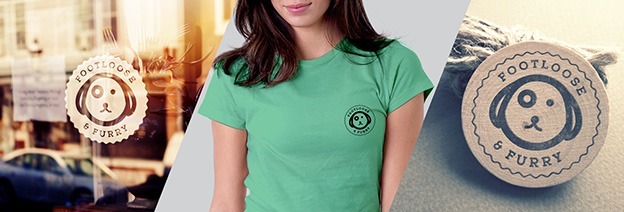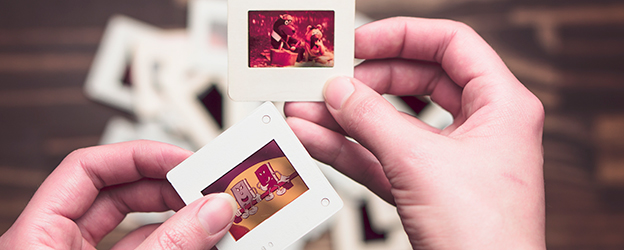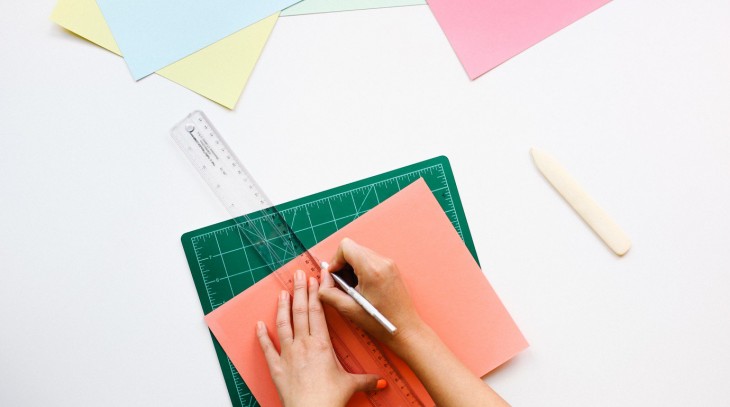
In a free market world where companies fight for market share and recognition, your brand can be your most valuable asset. It helps you stand out from competition, gives your company a clear sense of place and purpose and it’s an important element of customer loyalty.
There are millions of recognizable brands in the world, but when you think about how many different companies exist to serve different purposes, you realize that the number of truly known brands – legacy brands – is meager.
A truly great brand goes beyond a great logo and color palette. A great brand has a singular idea behind it, a sense of purpose that drives everything that company does.
Once you come up with that story for your own business, you can determine the personality of your brand; the logo and design guidelines will come much more easily. Design is that element that stands out initially, but it’s your brand story that is going to give that design and your company’s identity resonance.
Your goal doesn’t need to be as ambitious as creating a legacy brand, but it should be threefold:
- For you to have a clear and concise idea of what your brand is
- For your employees to be aware and believe in your brand
- For your customers to be loyal to your brand and what it stands for
Branding your brand is not an easy task. A lot of it requires introspection and commitment.
Thinking about your complicated, multi-faceted company and trying to come up with a singular idea of what it stands for is a difficult and time intensive process. So where do you start and how do you go about getting to a brand promise, brand story and design guidelines?
The brand promise
What do you believe? What gets you up in the morning and gets you to work? What problem does your company solve for your clients?
Creating a statement by filling in the blank: “We believe….”
Do this over and over again, targeting different aspects of your company and of yourself (if you’re branding yourself). This is an exercise in identity, and it’s important to start as big as possible and then get smaller over time so that you’re sure to cover every aspect of who you are.
Coming up with answers to this question is easy for some and hard for others, but it’s the most important step in creating a brand that resonates and has lasting value.
Keep in mind that this statement is not a tagline. It can be, but it’s better to think of it as a guiding principle from which a good copywriter can derive a tagline – an idea that a great designer can turn into a beautiful logo and design guidelines, and a feeling of purpose that your company’s employees can support.
Once you have a good number of “We believe that…” statements, start looking for patterns. Combine similar statements and discard any that don’t feel true.
Look for buzzwords (e.g. “inspire,” “innovate,” “best”) and replace them with more precise synonyms. The purpose of this part of the exercise is to hone in on a handful of truth-bearing statements that you can then bring to different stakeholders and gut check them.
You know you’ve found your promise when you land on a statement that reminds you of your company when read entirely out of context. Don’t worry – if you land on something that feels 85 percent there, you might come up with ways of tweaking it to perfection as you move along through next steps. This isn’t written in stone, but it will guide the remainder of your brand discovery process.
How do you do this? Why do you do this?
Once you’ve landed on a statement you’re comfortable with, you’re ready to expand on it and give your brand a story. Answer the questions “How do you do this promise?” and “Why do you do this promise?” separately.
Again, go through the same exercise as before – create many statements that answer each question, using many different synonyms, variations on sentence length, etc. This way, as you create more statements, you’ll discover more about your brand and be able to hone in on the truth behind the work you do.

Like you did with the brand promise, make sure you run your how and why statements by stakeholders and people you trust. Set them next to the brand promise and see how they all live together.
Look for patterns that lead to a story. Is your company the hand-holding security blanket-like service you wish you had during your own personal experience in the past? Or are you a luxury-focused company that’s inspired by years of study in human behavior and needs?
These are the kinds of stories that build brands with purpose, and this part of the exercise exists for you to find your own story.
Personality is where your brand takes shape
Once you have three statements you’re comfortable with (your brand promise, your “how” statement and your “why” statement) and the seeds of your story have been planted, you start to have the beginnings of a brand personality.
What words are you using? Are they more complicated and academic, or are they simple and straightforward? What tone are you gravitating towards – clever, comical, serious, trustworthy?
Pull together all the synonyms you’ve been looking up and pick out a dozen that speak to your brand personality. Be precise. Are you simply “friendly” or are you “affable”? Are you “trustworthy” or “dependable”?
Over the course of the previous exercises, you saw your brand take shape. Now it’s time to nail down all your particulars and get ready to start creating some tangible brand pieces.
The result of all this introspective work is a single document that can be handed off to a designer, a copywriter, a marketer or a stakeholder as a brand brief that can easily guide the creation of design guidelines, internal or external communication, or business decisions.
This document now has three parts – your brand promise, your why statement, your how statement and a dozen or so stand-alone words that describe your brand’s personality. This is an internal document that will guide all external facing brand elements and keep them grounded in your company’s core truths and ideals.
Design guidelines (The fun part!)
Congratulations, you have your brand identity brief! The hardest part is now over, and it’s time to get a logo and accompanying brand guidelines that reflect everything you’ve put together.
Whether this means designing it yourself or have decided to hire an outside designer, be sure that the person you hire understands your brand brief. Finding a designer with a style that reflects the personality you put together is difficult, but crucial.
There are three ways to go about it – explore Behance for talent with a style that works for you, find a brand you love and try to find the designer who did their work, or reach out to designers on 99designs and get a slew of crowd-sourced designs to choose from.
No matter which you do, ask for three things in your guidelines: a logo, a primary and secondary font, and colors with codes. This will allow you to infuse your brand in all of your communication without having to go back to the designer every time you need a new document done.
At this point, the brief should be in stone and should not be changed to yield different design results. This is a blanket statement – there are plenty of times where tweaking one word or another, or adding a bit to explain something further, can yield better results. But be careful that doing so isn’t distorting the message you created in your brand identity statements.
Branding your brand is an incredibly difficult task to undertake, and it’s one that you can do yourself or hire professionals to do. Regardless, you should be incredibly involved every step of the way, as you know your brand best.
Use the brand identity statements to help drive communication internally and externally, because the strongest brands have a bullet proof and consistent identity that permeates every element of their businesses. Strong brand recognition is powerful, so do your best to reinforce its use as much as possible to create a coherent identity.
Branding is hard – do you have a branding success story to share?
Read next: 5 simple tips for visual branding on social media
Get the TNW newsletter
Get the most important tech news in your inbox each week.









